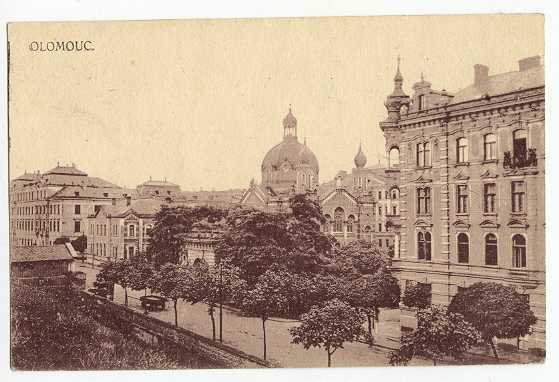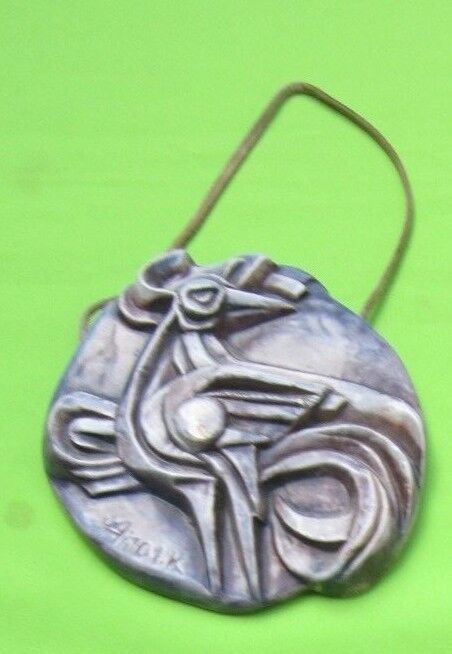-40%
Ramban Rabbi Moshe Ben Nachman (Nachmanides) 1194-1270 Judaica Postcard
$ 4.74
- Description
- Size Guide
Description
Very nice printed postcard 5.25" x 3.5" in excellent condition. Marks the anniversary of the Ramban's passing, the 11th of Nissan 5030 (1270).The history of Eretz Israel has known many pioneers that have come to cherish its earth. We have heard of the disciples of the Vilna Gaon and the Baal Shem Tov, men who came to build towns and villages in the land. We also know of more recent pioneers, who arrived during the last century and who made the desert bloom. However we know very little about the first pioneer who arrived in Eretz Israel after a series of long and difficult events, a man who revived the Jewish settlement in Jerusalem. We are speaking of our teacher Moshe ben Nachman, the Ramban, who arrived at the gates of Jerusalem on the 9th of Elul, 5027 (1267) at the age of 73.
Our teacher Moshe the son of Nachman was born in Gerona (Catalonia), Spain in 4954 (1194), a descendant of a famous line of rabbis. He studied Torah with Rabbi Nathan, the son of Rabbi Meir of Trinquetaille, and with Rabbi Yehudah the son of Rabbi Yakar. He also studied languages and the sciences, and became proficient in medicine, which he practiced to earn a living.
Already still young, at about the age of 16 he began to write his commentaries on the Talmud, and he became known as a scholar on the entire Torah. He also wrote a profound commentary on the Torah and the book of Job.
In his youth he married a woman who would bare him three children. The Ramban spent most of his life living in tranquility in Gerona, his native town, surrounded by a large group of his great disciples, including Rabbi Shlomo ben Aderet (the Rashba) and Rabbi Aaron Halevi (the Raah), men who became luminaries in Torah study.
However in his old age, certain events transpired that came to shatter his peace, taking away his tranquility to such an extent that he had to leave Spain.
In 5023 (1263), the Ramban was asked to come to Barcelona for a public debate on religion with the apostate Pablo Christiani, a debate that was held in the presence of King James I of Aragon. With great daring and courage, the Ramban led the fight against him and his religion, emerging from the debate with great honor. The day after the debate, the king welcomed the Ramban and gave him 300 maravedis (copper coins) for the expenses of his trip. However when the Ramban recorded the details of the debate, the priests demanded that the king punish him for having attacked the principles of Christianity in his book. At that point the Ramban decided to leave for Eretz Israel.
During his entire life, the Ramban had wanted to settle down in Eretz Israel. In his works he spoke extensively of the good of the land, of its holiness and glory, and on the beauty of its landscape and climate. In his commentary on the Torah he interprets the verse of rebuke, “I will make the land desolate; and your foes who dwell upon it will be desolate” (Leviticus 26:32) as a tiding of good news, announcing that during the entire exile, our land will not accept our enemies: “This is also a great proof and assurance to us, for in the whole inhabited part of the world one cannot find such a ‘good and large land’ [Exodus 3:8] which was always lived in yet is as ruined as it is [today], for since the time that we left it, it has not accepted any nation or people, and they all try to settle it, but to no avail.”
Because of the verse that states, “You shall possess the land and you shall settle in it” (Numbers 33:53), the Ramban considered settling in Eretz Israel as being among the 613 mitzvot of the Torah. He said, “In my opinion this is a positive mitzvah, in which He is commanding them to dwell in the land and inherit it, because He has given it to them and they should not reject ‘the inheritance of the L-RD’ [I Samuel 26:19]. Thus if the thought occurs to them to go and conquer the land of Shinar or the land or Assyria, or any other country and to settle therein, they are [thereby] transgressing the commandment of G-d.”
On Shemini Atzeret, before departing from the community, the Ramban gave a lecture on the book of Ecclesiastes, one in which he alluded to the reason for his departure. He recounted that our father Abraham was born in a foreign land in which he battled idolatry, and that the king – fearing that Abraham would turn the hearts of the country’s inhabitants away from their beliefs – exiled him, and so he went to Eretz Israel.
At the end of the year 5027 (1267), after a very long voyage, the Ramban arrived at the port of Akko. He remained there but for a few days, and on the 9th day of Elul he arrived in Jerusalem.
The land was then deserted and desolate, and Jerusalem was completely destroyed. The Jews who were living there had been cruelly exterminated. When he saw these terrible ruins, he torn his garments in accordance with Halachah, and when he arrived at the location of the Temple he again tore them and read a psalm with heartfelt emotion: “A psalm of Asaph: O G-d! The nations have entered Your inheritance, they have defiled the Sanctuary of Your holiness, they have turned Jerusalem into a heap of rubble” (Psalms 79:1).
Arriving in the holy city, the Ramban only found two brothers, tanners, among the poorest of the people living there. In the entire city of Jerusalem, there was not even a single synagogue. It was only on Shabbat and the holidays that the few Jews of the area assembled at the brothers’ home to pray together.
The Ramban immediately began to work diligently to establish a synagogue. He found a house that was in ruins, yet built on marble slabs and possessing a magnificent dome, and it was there that he founded a synagogue. On Rosh Hashanah, he gave a sermon to the Jews present on the purity and holiness of Eretz Israel.
He was not content, however, with only one house of prayer. Rather, he wanted to make Jerusalem into a center of Torah, a city in which the Torah would go out to all Israel, and thus he established a great yeshiva. News of this development quickly spread throughout the land, and many students from near and far (particularly from neighboring lands) gathered around him. In the letters that he sent to his sons and his students living abroad, the Ramban asked them to support his yeshiva. He also founded the Rabbi Meir Baal Haness charity fund, which enabled him to more effectively support the yeshiva.
The Ramban was active in Jerusalem for three years, and he succeeded in reviving the Jewish community not only in Jerusalem, but also in other cities of the land. Beginning from the time of his arrival, the Jews of Jerusalem began to spread throughout the rest of the land, a movement that has continued to this very day. It is with just cause that the Ramban has been called the “Founder of the New Community in Eretz Israel.”
On the 11th of Nissan, 5030 (1270), the Ramban’s pure soul ascended to Heaven, and he was buried in Haifa next to the grave of Rabbi Yechiel of Paris. However according to one tradition, the grave of the Ramban is in Hebron, next to the outdoor steps of the Tomb of Machpelah.
One legend states that when the Ramban left Spain for Eretz Israel, his disciples asked him for a sign to know the day of his death. He told them that on the day he would die, his mother’s tombstone would split apart and there people would see the shape of a menorah. Three years later the tombstone split, and inside one could make out the shape of a menorah. People then knew that the prince of Torah and wisdom had died, and Jews in every land mourned his passing.









